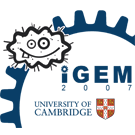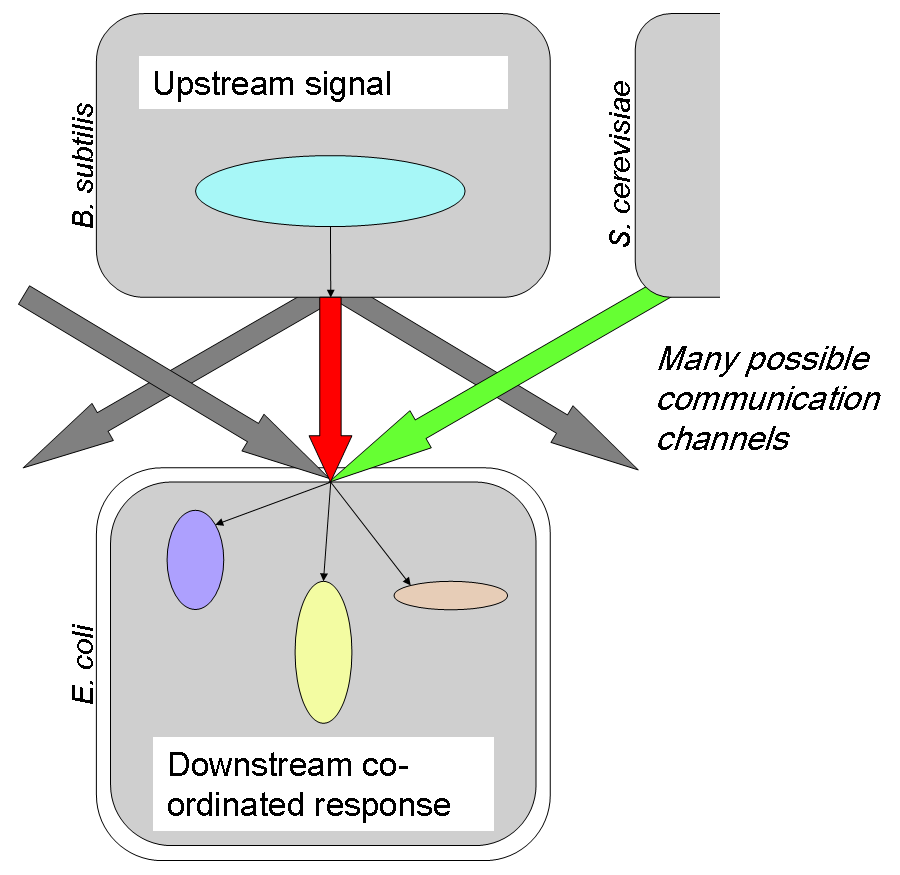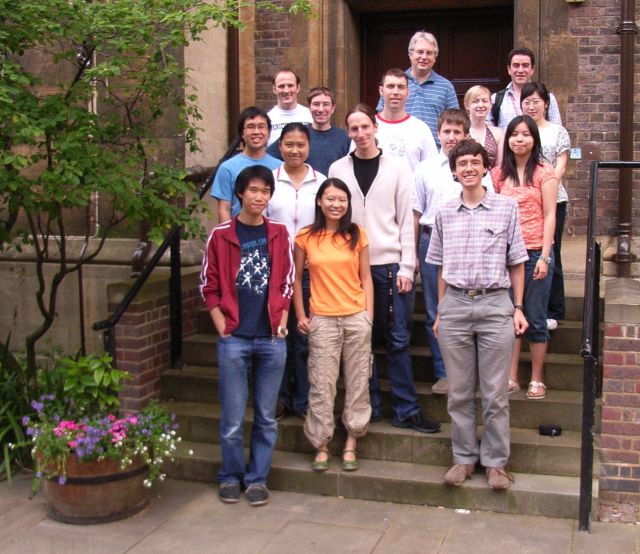Cambridge
From 2007.igem.org
|
BOL: Bacteria OnLine | ||
IntroductionIn order to engineer interesting and useful functions in biology, a robust and extensive range of intra- and inter-cellular signalling pathways must be available. By analogy with the Internet, where adoption of the standard TCP/IP communication protocol has enabled worldwide connectivity from supercomputers to refrigerators, such a system must be accessible to cells of different heritage and structure (different “operating systems”) with the potential for processing messages received and taking action dependent on their content (see diagram at right). In the course of this project we attempted to implement candidates for both types of signalling mechanism, and additionally made progress towards adding a new Gram-positive platform for synthetic biology to the Registry.
| ||
|
PoPS amplifier We BioBricked and characterised strong activators and their associated promoters. With them we built a standard amplifier which can be used in any synthetic transcriptional system, taking in a standard PoPS input and giving a PoPS output of a known amplification factor. In addition, the activator-promoter pairs studied have differential levels of activation in different combinations - this crosstalk enables their potential use for co-ordinating complex responses to stimuli. |
Peptide signalling Peptide signalling systems exist in profusion among Gram-positive bacteria and are recognised with high specificity. To implement a paradigm peptide communication channel we chose the Agr (Accessory Gene Regulator) oligopeptide-based quorum sensing mechanism from S. aureus. We worked on converting it into a reusable interbacterial signalling system for communication amongst and between both Gram-positive species (B. subtilis) and Gram-negative bacteria (E. coli), based on controllable secretion and detection of the signalling peptide AIP. In order to use such hydrophilic signal molecules in Gram-negative bacteria, we introduced an outer membrane pore to allow their diffusion into the periplasm. |
Gram-positive chassis Most synthetic biology so far has involved Gram-negative bacteria, which are more widely used in molecular biology research; however, the biotechnology industry relies on Gram-positive bacteria. We worked on constructing a "chassis" out of Bacillus subtilis, a common Gram-positive bacterium, into which genetic engineers can add BioBrick parts and control circuits. |
Meet the team!
Top row, from left: James Brown (PhD student mentor), Jim Haseloff (faculty supervisor), Gos Micklem (faculty supervisor) Second row, from left: Yi Jin Liew, John Crowe (faculty), Lovelace Soirez, Stephanie May, Yue Miao Third row, from left: Zhizhen Zhao (Jane), Stefan Milde, Dmitry Malyshev, Xinxuan Soh (Sheila) Front row, from left: Narin Hengrung, Yi Han, David Wyatt Not in photo: Jim Ajioka (faculty supervisor), Lorenz Wernisch (faculty), Tony Southall (postdoctoral researcher) The mailing list for the whole Cambridge iGEM2007 team is igem2007 [at] ccbi.cam.ac.uk | ||
SponsorsWe are extremely grateful to the following organisations for their support of our project: [http://www.cam.ac.uk https://static.igem.org/mediawiki/2007/9/95/Cambridge_UofC_coat_of_arms.png] [http://www.dna20.com https://static.igem.org/mediawiki/2007/1/16/Cambridge_DNA2_0_logo.png] [http://www.epsrc.ac.uk https://static.igem.org/mediawiki/2007/f/fd/Cambridge_EPSRC_logo_small.png] Other sponsors
| ||


